It’s getting lighter and brighter out there, which means it’s time to get those motorhome wheels moving – if you haven’t already!
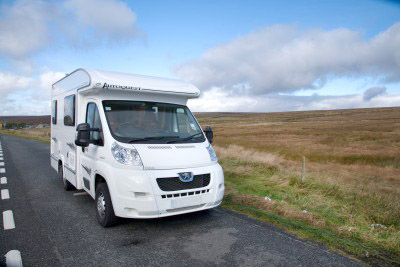
Here’s our top 10 Spring checklist to make sure your first motorhome trips get off to a good start and so your vehicle is in tip top condition when it hits the road.
- Tyre check: Examine all your tyres for any damage, bulges and cuts and make sure they’re correctly inflated as this can effect acceleration, braking, steering and fuel consumption and more importantly help to prevent a blow-out.

Check the pressure on all your tyres, including the spare, and consider fitting a tyre pressure monitor to give you that extra peace of mind that your pressure is being constantly monitored. Also check the tyre tread depth, making sure it’s at least 1.6 mm (the legal minimum) across three quarters of the tyre surface, as well as tightening the wheel torques to avoid wheel detachments. Try the 20p test by inserting a 20p coin into the tyre’s grooves at several points across and around the tyre. If the outer band of the coin is visible whenever you check the tread, your tread depth may be illegal and you should have them checked by a qualified tyre specialist.
- Flush the water system: Flush out the water system to get rid of any bacteria and use a drain and pipe cleaner specifically for motorhomes (like Olpro Fresh & Clear) by adding it to your water tank and running it through your pipes.
- Windows, doors and seals: Let the hose loose on the motorhome to make sure the seals and windows are keeping out water and check them over to make sure they haven’t suffered any damage over the winter months, paying particular attention to skylights. Don’t use a jet washer for this! Check for any damp or mould and if it smells a bit musty be sure to give the vehicle a good airing and use a dehumidifier. There are also moisture traps that will absorb moisture in the air. Treat mould by wiping with a damp cloth and using an anti-mould cleaner. Dry thoroughly and then spray with clove oil mixed with water. Leave for 20 minutes and then wipe dry.
- A spring clean – inside and out: Get out the specialist cleaners, ladders, bucket and brushes and with some good old elbow grease you’ll have it sparkling for the new season. Here’s our cleaning guide for some more tips.

- Battery check: If your motorhome has been layed up over winter and you haven’t been giving it a little trickle charge or have not had it hooked up to a solar panel then it’s likely to be flat. Disconnect it and charge it up, then re-connect and use some of your appliances to make sure it holds enough charge.
- Gas: Make sure you gas bottle or LPG tank is full. Test all appliances are working correctly, making sure the flames on the gas cooker are blue and that all gas hoses are still in service and are not damaged. High pressure rubber hoses should last for five years and will be stamped with the date of manufacture.

- Lights: Try out the motorhome lights, outside and inside and replace any bulbs. Check the signal and brake lights are all working.

- Alarms: Make sure intruder and smoke alarms are working, as well as the carbon monoxide detector and change the batteries if needed. Check the fire extinguisher is still in date.
- Check the levels: Make sure you have enough oil, coolant, windscreen wash and water and top up or replace.

- Tracker: Make sure your tracking device is still working by taking your motorhome for a spin, pulling over and giving your tracking device company a call to check they can highlight the location of your van’ and to prove the device is still working properly.
Finally and most importantly, is your motorhome insurance up-to-date? If you are looking for cover, why not call us for a quote or see more about our discounts.
Before you set off on your travels, plan your journey carefully, giving yourself plenty of time to arrive and making sure you get plenty of rest stops. Also check out our full pre-departure motorhome checklist.
If you have any top tips of your own and would like to share, feel free to leave a comment below. Happy motorhoming!


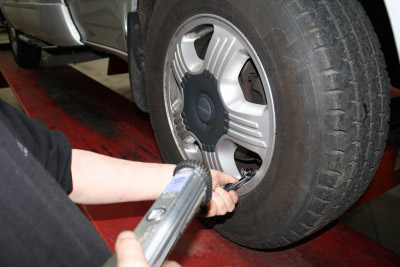
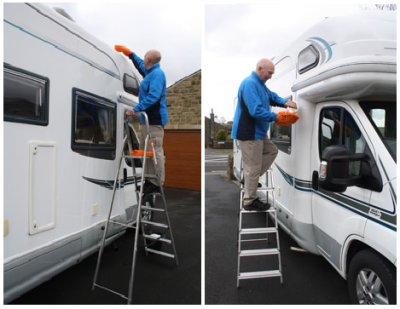
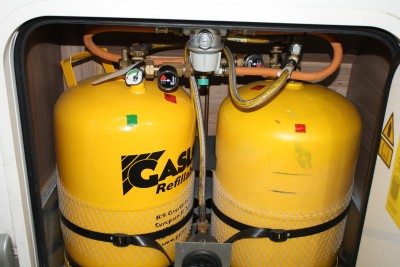
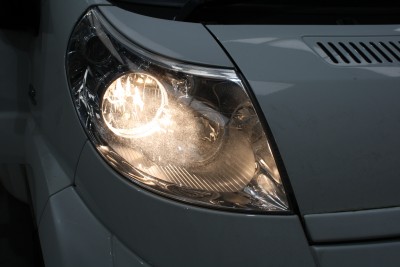
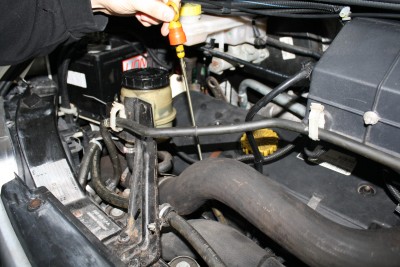
I dose both my tanks using a solution of Milton. The fresh water tank then gets a rinse before filling. I stick a gallon of water in it on the first run so it sloshes around, then empty and fill at the first site. Milton is so much cheaper. If its good enough for babies, its good enough for me!
For those of us with motorhomes over 3500 they are classed as HGV and the minimum tyre tread depth is reduced to 1.0mm, not that I would ever recommend using such worn tyres.
Excellent article, but just to clarify the legal limit for tyres is 1.6mm across the central three-quarters of the tread.
Thanks Don.
Another thing is to check if your Calor lite gas cylinders are under their recall (see https://www.calor.co.uk/recall) – ours were, and so we swapped them for full cylinders. Also check you can actually fit pigtail into cylinder, one of the ones we were given had a ‘squashed’ thread port, so could not be used – luckily I noticed before we were out on some rainy site with no gas! Calor must fill the cylinders through that port, so I can only imagine cylinder was dropped after filling, smashing the plastic handle and bending the port, but handle was just replaced and it was sent out without checking.
its the old man up a dodgy ladder that worries me . or is it the dodgy old man up a ladder !
Hey John – that’s our company Chairman. I can assure you there’s nothing dodgy about him or his ladder!
The article on tips for motorhomes is good but if you can arrange your Habitation service and a vehicle service at the start of the season which l do all of the checks noted in your article should be done for you.
If you are like my wife and l in our 70’s this saves us the problem and can turn up minor problems which can be resolved before your first trip out.
We have done this since reaching 75 and found it very beneficial to us.